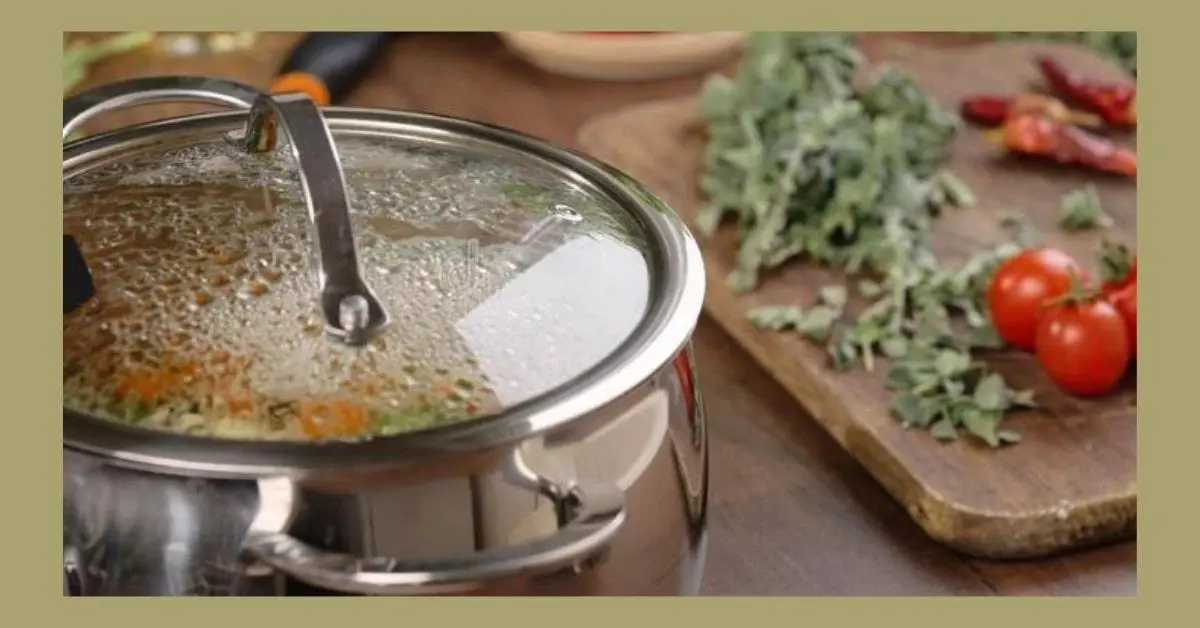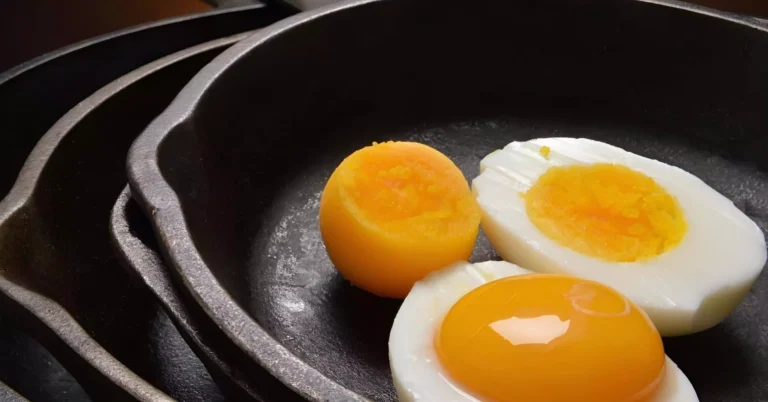Stock pots are kitchen essentials that one can find in almost every household, no matter which cuisine you may prefer.
Stocks are an indispensable part of innumerable recipes and can enhance the flavor of soups, meat or any other dish really. And to make them, you may not require much effort but you must have plenty of time on your hands.
People prefer readymade stock or broth powders to skip the lengthy time period required to make them from scratch. But any classic Phở or traditional Ramen requires fresh broth and stock brewed over hours in a pot. Specifically, stock pots.
Toss in some meat, aromatics or veggies of your choice and it becomes a dish of its own. Stock pots aid in preparing extremely delicious broth and it doesn’t matter if you are a novice or an expert, they make for one of the most necessary kitchen elements that you absolutely cannot do without.
Table of Contents
What is a Stock Pot?
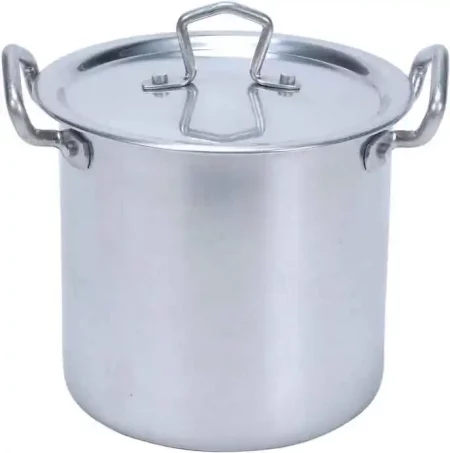
Stockpots are classic kitchen appliances that are commonly used to make stock or broth. These are wide pots having straight sides and a flat bottom that aids in simmering food for long hours.
Stock pots are mainly made from stainless steel. This helps keep the large pots lightweight. Stainless steel is also a good conductor of heat which helps in adequately distributing heat throughout the body of the pot.
The build material can also vary between aluminum, copper and enamel. There are pots in the market that come with layered bases, so as to increase the heat conductivity of the utensil.
Stock pots can be very large and you would be expected to make some space for them in your kitchen, if you are a fan of making broth. The straight sides add plenty of volume to its overall capacity.
They are usually used for cooking over stovetops for long periods. But some smaller sizes can also be put in the oven, given they are oven-safe.
How It Works
To put things simply, stock pots are large, deep pots used to simmer food over long hours. Typically, in order to make soups, broths and sauces. It can also be used for other recipes such as boiling vegetables, seafood or a healthy stew.
Stock pots are tall and usually narrow. The narrow sides are there to ensure slow evaporation of the liquid inside. The delayed process helps in preparing hearty broths and stocks that need a longer amount of time to cook.
As the food simmers over the cooktop, the walls which are generally built from conductive metals like stainless steel, copper or aluminum – let the heat traverse through the body of the pot and evenly heat the contents from within.
Stock pots are usually constructed to be quite durable, so they can withstand long hours of heat. They are layered with different metals to prevent warping and heat damage. And also to keep them compatible with different types of cooktops.
The shape of stock pots also vary. You may want to purchase one that fits on your burner. To ensure even heating, one should opt for straight bases for burners that are not oval. They also come in flared or oblong bases.
The depth and heavy construction is perfect for consistent boiling and of course, for big batches of your favorite broth.
Some people often confuse a stock pot with a Dutch oven, so here’s a post that highlights the difference between the two. So you can decide which one your kitchen needs.
Features

- Due to its stainless steel construction, the heat conductivity is excellent. Heat gets distributed rapidly and will cook your food evenly throughout.
- They are lightweight, thus making them easy to grasp and handle in the kitchen.
- Durability is a given, since they are made to withstand heat for long hours. They can last for a long time given appropriate care is taken.
- Stockpots are easy to clean owing to their simplistic design.
- They are non-reactive to acidic foods like tomatoes and lemon, so you do not have to worry about leeching chemicals as long as they are made from pure stainless steel.
However, if you go with aluminum or copper builds make sure the cooking surface is at least lined with stainless steel to ensure non-reactivity. - Stainless steel stockpots are also corrosion resistant. Make sure to wash after every use and give enough time for air-drying to prevent oxidation, in case of aluminum and copper builds.
Drawbacks
- Stockpots are tall and wide whereas its handles are quite small as compared to the pot. This makes them quite inconvenient to lift, especially with one hand.
- Although they are quite lightweight, they can become pretty heavy with liquid or solid food in them. People with arthritis or weak wrists should keep this in mind before purchasing as using this frequently may be strenuous for the joints.
- While it is possible to use stock pots for stove-to-oven cooking, their build and dimensions make the process a bit difficult.
What To Look For
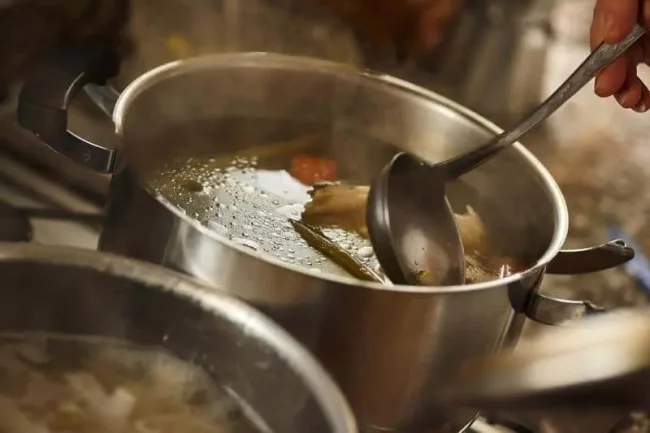
Size
While these can range between 5 – 20 quarts for use at home, you can also get larger ones for commercial purposes.
If you intend on getting only a single stockpot for all your use, then one that ranges between 12-16 should do. Or you can get multiple pots of different sizes to suit specific needs.
Build Material

- Stainless steel. This is the best kind. It is strong, lightweight and durable. It doesn’t react with acidic foods and is corrosion-resistant. If the base core is constructed from aluminum then it’s an even better conductor of heat.
- Aluminum. Lightweight and very strong, can last for many years if taken care of. It does react with acidic food like citrus, for instance. However anodized aluminum decreases the reactivity. They are tough and can withstand rough use. Not entirely scratch-proof though.
- Copper. These probably look the best in terms of aesthetics. The appearance of copper cookware is just beautiful in all its shining glory. The heat conduction is also excellent, one of the very best.
However because it gets heated fast, I would ask you to practice caution when on heat as the food may get overcooked just as fast. These cannot be used on induction cooktops though.
And cleaning can be quite a chore but it’s important you have a regular schedule for cleaning to preserve the look. - Porcelain. Pots made from porcelain usually come in a variety of colors. These are lightweight as well and not that difficult where maintenance is concerned. These are usually dishwasher safe and non-reactive to acidic foods.
They are generally made from carbon steel, coated with porcelain enamel and rimmed with stainless steel. The enamel coating, however, tends to chip or flake if proper care is not taken. - Cast Iron. The ones made from cast iron can be very heavy to hold. But they are very rugged and strong. They can practically last generations if the right care is taken. But it doesn’t take much to clean or handle these.
They are very conductive and can cook food for long hours and evenly throughout. Pre-seasoning is a must, and keep away from acidic food unless it’s coated with enamel. - Non-stick. This isn’t a build, per se. Usually, the non-stick pots have an aluminum base core and are coated by a non-stick material to prevent the burning and sticking of food.
Construction
The construction of a stock pot is of utmost importance as a good quality pot has a superior build and is made through a process with rigorous quality assurance standards.
Stockpots must have a heavy bottom with a forged base, thick enough to conduct heat quickly and evenly. The bottom is heavy to prevent the sticking of food by providing heat at a gradual rate.
The walls should have multiple layers or even just a single layer of aluminum for enhanced conductivity.
The shape should also be consistent with a standard stockpot. That is a pot with tall sides and a relatively narrower base.
This base is what captures the heat and sends the contents up through the wall. If the walls are comparatively wider than the base, the conduction will be slower.
This will result in uneven cooking affecting the quality of the dish.
Lids

Flat glass lids are preferable to other kinds. Glass lids help to accurately monitor the food during cooking although you must watch for good quality tempered glass construction or they run the risk of shattering under drastic temperature changes.
Ensure the lids fit well onto the pot. Ill-fitting lids not only let steam out when we don’t want it to, but also cause mishaps in the kitchen.
Flat lids are easier to regulate the escape of heat but domed lids help to create a self-basting cycle. Pick one that suits your needs.
If your pot sets already come with their own set of lids, you can always purchase spare ones in the market that fit better.
Handles
Handles on a stockpot should be wide and attached to the sides of the pot. They should be secured with rivets or heavy screws to prevent falling off.
They should be wide enough to let one’s hands pass through as well as comfortably grip the handles even with mittens on. It is preferable they be heat resistant or be coated with silicone.
They should be strong enough to withstand the heavy weight of the pot so as to not cause kitchen accidents.
What can you cook with it?
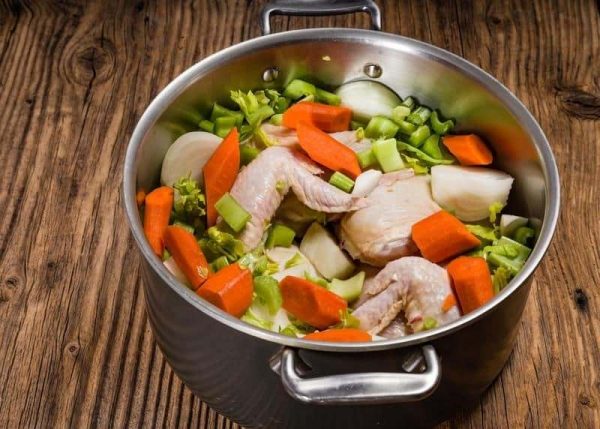
Liquid content in a stock pot tends to evaporate more slowly, thus aiding in a smooth slow-cooking process. Therefore, long-simmering mixtures like soups, stocks and broths are best suitable for cooking in a stock pot.
A stock pot is also great for boiling ingredients like potatoes and pasta. Easier to make mashed potatoes for Thanksgiving with this cookware, and especially in big batches.
You can also make a large amount of sauce and store it for future use.
Blanching and steaming of vegetables is also something stock pots are used for. And of course, if you are looking to flaunt your classic chili recipe at a family gathering – a stock pot has you covered.
Best Brands to Pick From
All-Clad, Cuisinart, Calphalon and Tramontina have some of the best stockpot models out there. Made from good quality stainless steel and also non-stick surfaces if that’s what you prefer – these brands have established a name for themselves giving customers the very best.
So you would not have to worry if your choices boil down to these names.

